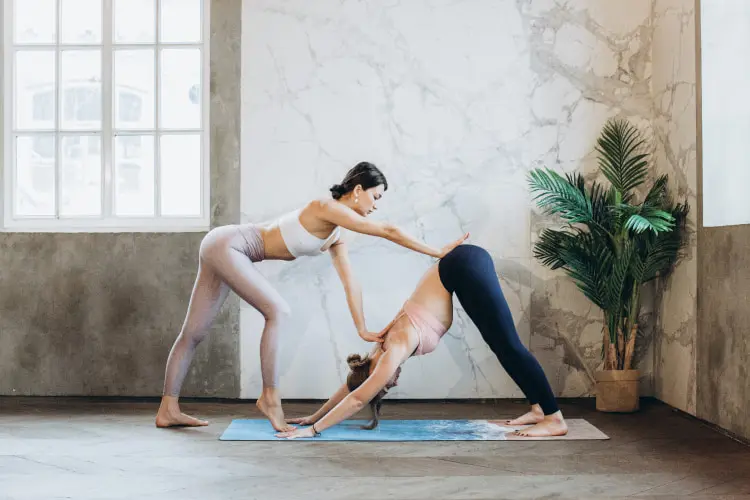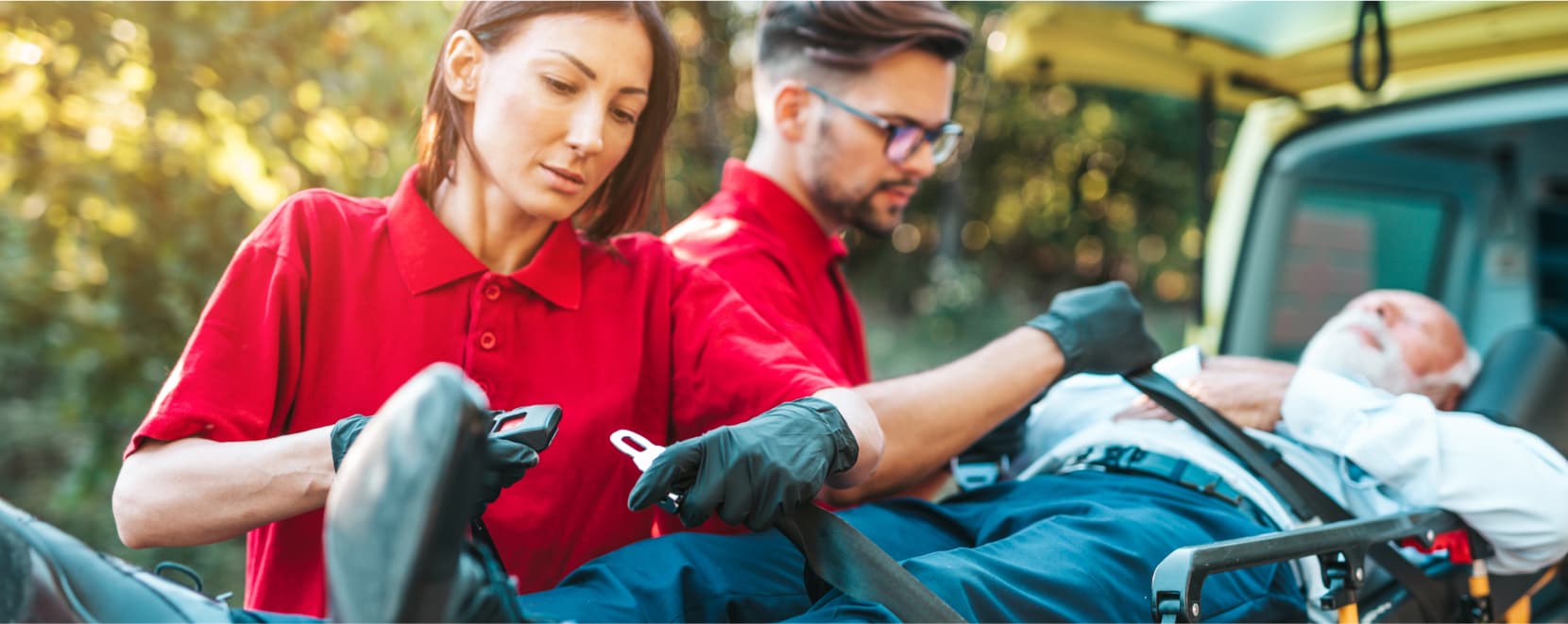Here are the top 5 other options for inversion therapy to use without a table:
- Foam rollers
- Yoga
- Gravity boots
- Inversion chair
- Chiropractic care
Are you looking for ways to relieve back pain without investing in an inversion table? Or maybe improve circulation, and reduce stress in an easier way? Look no further! Various methods can achieve the same effects. They don’t require a bulky piece of equipment to take up space in your home.
In this article, we’ll explore our top 5 alternatives to inversion tables. Each option has its unique benefits. All of them can be easily incorporated into your daily routine. Whether you’re a fitness enthusiast, a busy professional, or someone looking to alleviate discomfort, there’s an inversion therapy alternative that’s right for you. Let’s dive in!
What is an Inversion Therapy?
Inversion therapy is a technique that involves being suspended upside down or at an angle. This therapy helps relieve back pain, improve circulation, and decompress the spine. The therapy works by reversing the effects of gravity. It can cause compression and pressure on the spinal discs and nerves. Hanging upside down stretches the spine and reduces pressure on the discs. This allows them to rehydrate and heal.
While inversion therapy can be effective for some people, it is not suitable for everyone. It really may also have potential risks and side effects. Some people, when using an inversion table, may experience:
- dizziness
- headaches
- increased blood pressure
Additionally, people with certain medical conditions should use inversion therapy without a table. For example, with such as high blood pressure, glaucoma, or heart disease
Fortunately, there are alternative ways to achieve similar benefits without using an inversion table. Let’s look at them more closely. In any case, it is essential to consult with a healthcare professional. Do this before starting any new therapy or exercise routine. He will ensure that it is safe and appropriate for your individual needs.

Alternative to Inversion Table
Here are some alternative methods to inversion tables:
- Foam rollers. You can use these cylindrical pieces of foam to massage and stretch muscles. They improve circulation and relieve tightness and pain.
- Yoga. Certain yoga poses can help improve blood flow and relieve tension in the back and neck. For example, such as downward dog and standing forward bend.
- Gravity boots (inversion boots). Gravity can allow you to hang upside down. They provide similar benefits to inversion tables. You hang freely by attaching them to a bar or frame with straps on your ankles.
- Inversion chair. Such chairs provide many of the same benefits as inversion tables. But they are less cumbersome and easier to use. They allow you to provide inversion without a table while sitting in a chair. So it can be more comfortable for some people.
- Massage therapy. A professional massage can help increase blood flow. It reduces muscle tension and pain, making it a great alternative to inversion tables.
- Stretching. Regular stretching can help keep muscles and joints limber. It improves flexibility and reduces the risk of injury.
- Chiropractic care. Chiropractors use spinal adjustments and other techniques to help reduce pain. They also improve the range of motion in the back and neck.
1. Foam rollers
These are a popular alternative to inversion tables for relieving back pain. Foam is a typical material for such cylindrical tools. You can use them to massage and release tension in various parts of the body. They work by applying pressure to trigger points. This helps to alleviate soreness and stiffness. Foam rollers come in different densities, with softer ones being better for beginners and firmer ones for more experienced users. Regular use of foam rollers can help to:
- improve flexibility
- increase range of motion
- reduce the risk of injury
Foam rolling can be done before or after exercise or at any time throughout the day. It is a cost-effective and accessible inversion without a table. It can promote better circulation, relieve muscle tension, and promote overall wellness.
2. Yoga
Yoga is a popular inversion therapy without a table. It is a physical and mental practice. It focuses on breathing, mindfulness, and physical postures. It has been shown to improve flexibility, strength, and balance and reduce stress levels. The different types of yoga styles vary in intensity and focus. This allows practitioners to choose the style that best suits their needs. People who regularly practice yoga have also reported improvements in:
- sleep quality
- digestion
- overall well-being
Many yoga classes are now available online. It makes it easier than ever to incorporate this practice into your daily routine. It’s a great way to refresh your body and mind while also promoting a healthy immune system.
3. Gravity boots
These are also known as inversion boots. They are a type of footwear designed to allow the user to hang upside down or at an inverted angle. They are often used as an alternative to inversion tables, as they offer a similar spine decompression and relief to the lower back. Gravity boots are typically made of durable materials. For example, such as leather or synthetic materials. They come with sturdy straps that allow for safe and secure attachment to a bar or other sturdy support. Regular use of gravity boots is believed to:
- improve circulation
- reduce muscle tension
- alleviate pressure on the spine
It makes them a popular choice among athletes, and fitness enthusiasts. However, it is essential to use gravity boots safely and under the guidance of a professional. Incorrect use can lead to injury.
4. Inversion chair therapy
An inversion chair is a type of equipment that allows users to perform inversion therapy while sitting in a seated position. It is designed to provide similar benefits to an inversion table, such as:
- spinal decompression
- improved blood flow
But it adds the convenience of sitting comfortably throughout the therapy. The inversion chair therapy has a padded seat, backrest, and armrest. You can adjust the seat to various angles of inversion. Users can strap their feet to the footrests and slowly recline back. This allows gravity to pull their body into an inverted position. Inversion chairs are often preferred by individuals who have difficulty getting in and out of an inversion table. Or it is good for those who experience discomfort while lying down. Do you want to incorporate inversion therapy into your daily routine but have limited space? Then inversion chair therapy is the best choice for you!
5. Chiropractic care
It is a non-invasive alternative to traditional medicine that focuses on the musculoskeletal system. Chiropractors use manual manipulation techniques to align the spine and other joints in the body, which can improve mobility and reduce pain. Yes, it’s not an inversion therapy, but it is without a table. But chiropractic care can also improve nervous system function. This is even can have a positive impact on the immune system. This type of care can be particularly beneficial for those suffering from:
- back pain
- headaches
- other musculoskeletal issues
It can also be helpful for those looking to improve their overall wellness. You can also prevent future health problems. Chiropractors may also provide lifestyle recommendations. For example, exercise and dietary changes. They can help patients achieve their health goals. Chiropractic care can be a valuable tool for maintaining a strong immune system. It can improve overall health and well-being.
FAQ
How do you decompress your spine without an inversion table?
Try doing spinal stretches to decompress your spine without an inversion table. For example, cat-cow stretch, child’s pose, or downward dog. Use a foam roller, or see a chiropractor for spinal adjustments.
What happens if you do the inversion therapy every day?
We can’t recommend doing inversion therapy every day. It can cause muscle strain, headaches, and increased blood pressure in some people. It’s best to start slowly. Consult a doctor or a physical therapist before starting inversion therapy.
Does sleeping on your back realign your spine?
Sleeping on your back may help realign your spine and prevent pain in the neck and back. But it’s important to use a supportive pillow and mattress. It will help to maintain proper spinal alignment.
Is inversion good for your brain?
There is no proof that inversion therapy can benefit your brain. However, some people may feel an improvement in cognitive function. It’s all due to reduced pain and stress levels after using inversion therapy.





Inversion therapy without a table sounds intriguing! I’ve always been curious about the benefits of inversion therapy but never had the space or budget for a specialized table. I appreciate the suggestions and tips shared here, and I’m excited to give them a try.
I’ve heard about the benefits of inversion therapy for relaxation and stress relief, but I’ve never tried it because I didn’t want to invest in an expensive table. This article provided some excellent alternatives that I can easily incorporate into my daily routine.